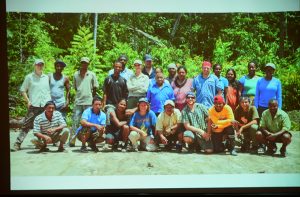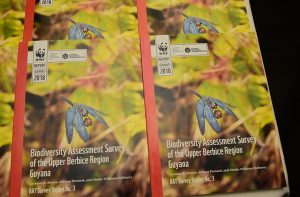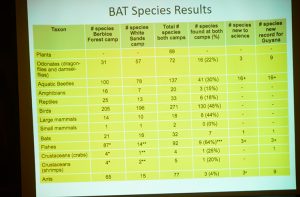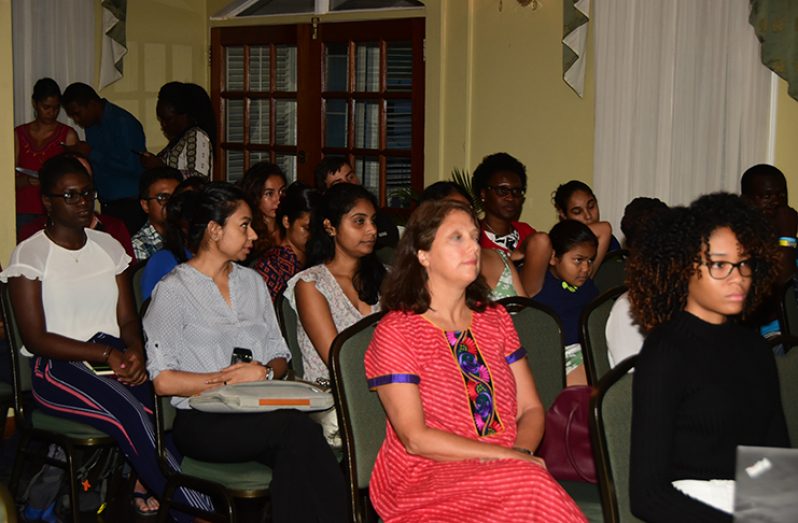– area never before studied by biologists.
THE rich biological diversity of Guyana continues to be under the radar of local and international researchers, and in this regard, World Wildlife Fund Guianas and Global Wildlife Conservation announced the completion of the third Biological Assessment Team (BAT) Survey and publication.
The Upper Berbice region–characterised by dense forests that were once deemed impenetrable–is a mystery no more. This publication unveils the abundant biodiversity and exceptional beauty that this unique region has to offer.

This time, the team of researchers which consists of expert field biologists, taxonomists, students and local community research counterparts, studied two sites with distinct environmental characteristics located within the Upper Berbice region of Guyana in September and October 2014; this region had never before been studied by biologists.
Michael Gordon, Communications Officer of the World Wildlife Fund Inc. Guyana Office, stated that the publication is significant to Guyana because not only does it feature the rich species diversity of the Upper Berbice region, but provides relevant agencies with data which can inform conservation management strategies for the region. He added that it also opens doors for further research and can prove to be very beneficial to academic institutions, since the report is the first of its kind for the Upper Berbice region.
The BAT survey report highlights that in the surveyed region, myriad species of flora and fauna, many of which were recorded for the first time in Guyana, were revealed. These include 16-plus Aquatic Beetles, nine Odonates, nine Ants, three plus Fishes, one Crab and one Bat. Some of the species in these categories are likely new to science, but further analysis is needed to confirm this.
The pristine forests of this region support scores of magnificent wildlife species including Guyana’s giants; the Jaguar, Anteater, Black Caiman, and a multitude of exquisite Odonates that serve as indicators of the environment’s health.

Among the species of conservation concern documented during the BAT survey are the Yellow-footed tortoise, Tapir, Giant Anteater, Red-faced Spider Monkey, to name a few.
Dr. Leeanne Alonso in her presentation, stated that no large-scale logging or mining was being done in the Upper Berbice River region at the time of the survey, but the extractive industries are displaying an increased interest in this region today, so it is crucial that stringent measures are taken by the relevant agencies to monitor, prohibit and regulate any activities that may compromise the integrity of this biodiversity-rich region.
The third BAT survey report was launched on July 31, 2018 at the Cara Lodge in Georgetown and was made possible through the collaboration of WWF-Guianas and Global Wildlife Conservation (GWC).

WWF-Guianas is part of one of the world’s leading conservation organisations with a mission to stop the degradation of the earth’s natural environment and to build a future in which humans live in harmony with nature. The Guyana office is involved in a plurality of site-specific objectives, often in partnership with civil society organisations and government institutions. These range from the protection and management of ecological landscapes, to educational and awareness campaigns on climate change and conservation. Learn more at http://www.wwfguianas.org/
GWC preserves the diversity of life on earth by protecting wildlands, conserving wildlife, and supporting local guardians. They maximise their impact through scientific research, biodiversity exploration, habitat preservation, endangered species protection, and environmental leadership development. Learn more at http://globalwildlife.org



.jpg)








